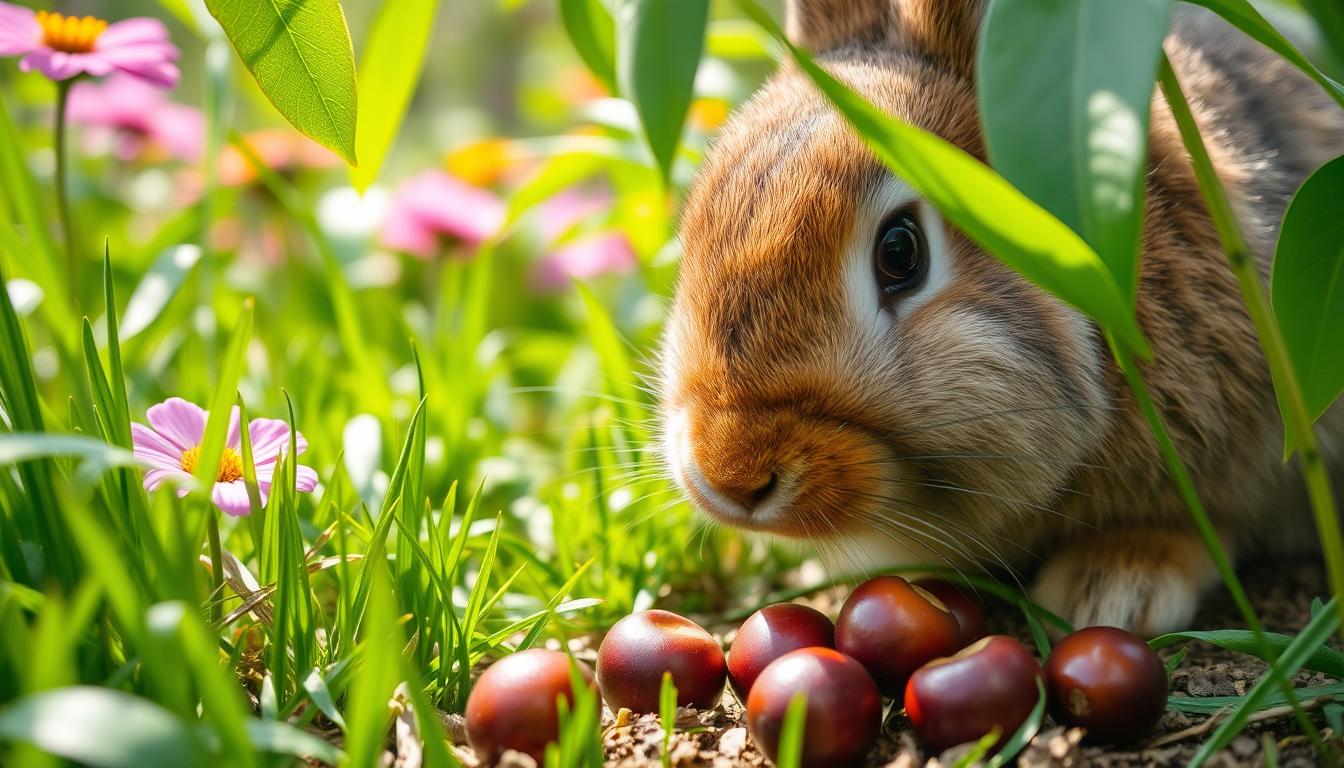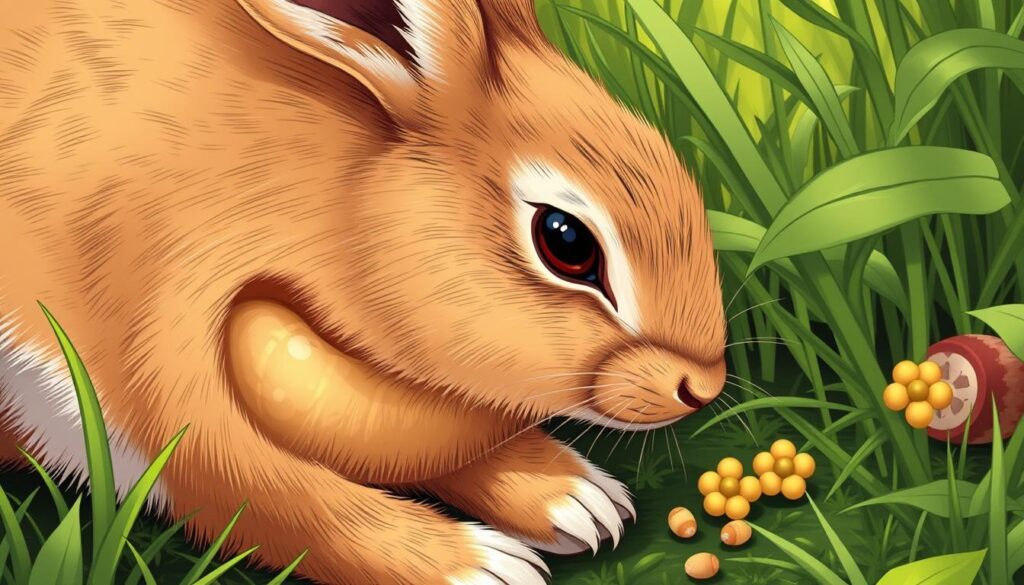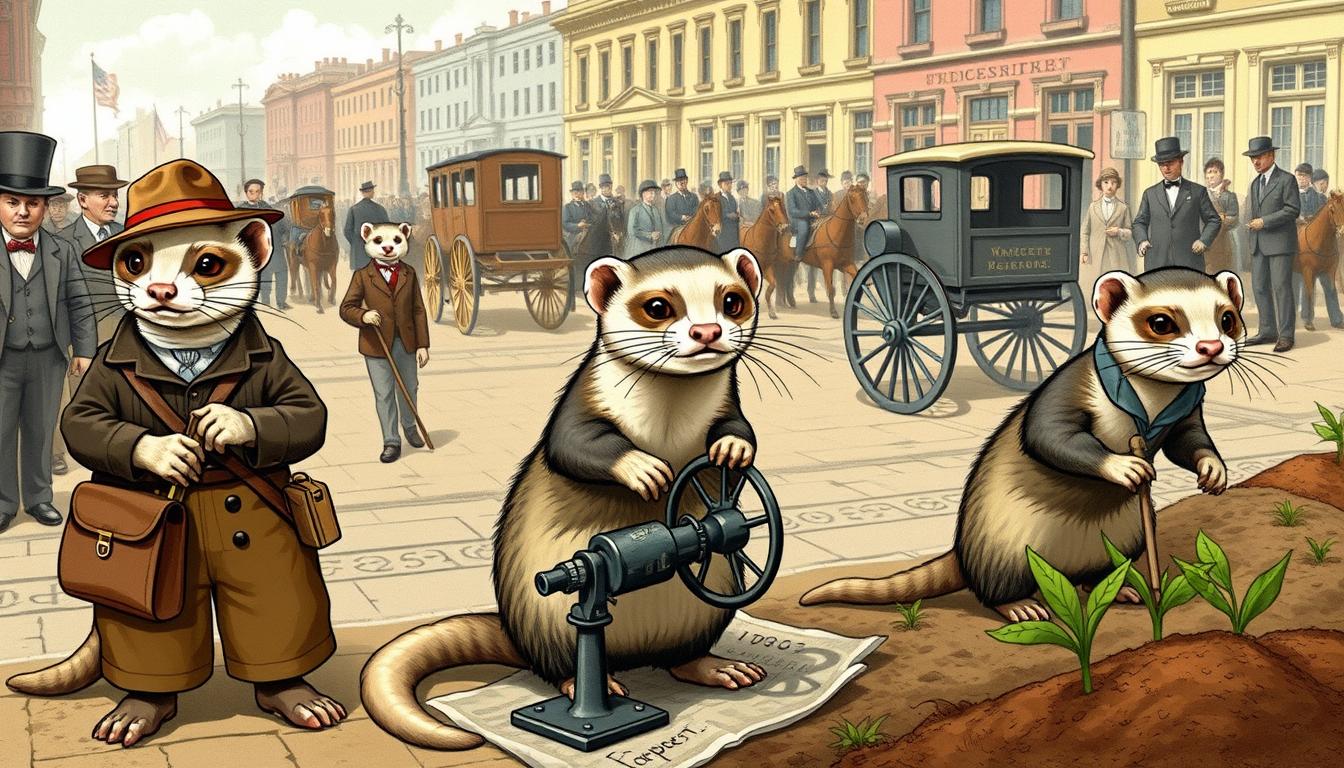What Are Cecotropes: A Guide to Rabbit Digestion

Did you know rabbits make cecotropes? These special droppings have about 28-30% crude protein. They give rabbits up to 30% of their total nitrogen. Cecotropes are key to a rabbit’s health and nutrition.
This guide will explain what cecotropes are and how they help rabbits digest food. Watching your bunny’s cecotropes helps them get the nutrients they need. For more on rabbit poop and health, see this resource on rabbit digestion.
Key Takeaways
- Cecotropes are crucial for a rabbit’s nutrition, providing a significant portion of their protein intake.
- A diet comprising at least 80% hay supports the production and proper consumption of cecotropes.
- Monitoring cecotropes can help detect underlying health issues in rabbits.
- Rabbits need to re-ingest cecotropes to fully absorb their nutritional benefits.
- Variations in the appearance of cecotropes can indicate dietary imbalances or health problems.
Understanding Cecotropes
Cecotropes are key for rabbit nutrition, helping rabbits get nutrients efficiently. They are different from regular feces because they are packed with proteins and vitamins, like B vitamins. These are crucial for a rabbit’s health1. The rabbit’s digestive system is amazing because it breaks down fiber in a special way. This leads to the creation of these nutrient-rich droppings2.
Rabbits are built to get the most from their plant-based diet, which includes hay, grasses, and greens. Without this special digestive process, they would not get enough nutrients. This could lead to serious health problems. It’s vital to understand the role of cecotropes, as they are not just waste1. They are essential for your rabbit’s diet and help them stay healthy on a high-fiber diet.
In a rabbit’s digestive system, cecotropes are made in the cecum, which is a big part of their gut1. The cecum is full of good bacteria that helps break down fiber and make important nutrients. This lets rabbits eat cecotropes again, getting even more from their food1. Knowing how this works is important for any rabbit owner who wants to keep their pet healthy and happy.
Definition of Cecotropes
A rabbit cecotrope is a special type of dropping made by rabbits. It comes from the fermentation in their caecum. This process helps them absorb nutrients from their food, keeping them healthy.
Cecotropes look like small, blackish-greenish clusters. They have a mucus layer that protects nutrients for more digestion. Adult rabbits have two types of droppings: fecal pellets and cecotropes. Cecotropes are key for their health because they’re full of good nutrients3.
The amount of cecotropes a rabbit makes can change. They don’t always make them at night. So, you might see different amounts based on the rabbit’s habits.
Cecotropes are very nutritious. They have about 28-30% crude protein. They also make B12 at a rate of 100 times what rabbits need daily4. This is especially important for rabbits on low-protein diets.
Watching what a rabbit eats is crucial. An unbalanced diet can cause health problems like cecal dysbiosis and runny stool3. Too much cecal production can lead to poopy butt. This is dangerous in hot weather because it can attract flies4.
The Role of Cecotropes in Rabbit Digestion
Cecotropes are key to rabbit digestion, helping them get the most from their tough diet. Food first goes through the stomach, then the large cecum. Here, it ferments into nutrient-rich pellets, packed with protein and vitamins. These pellets are vital for your rabbit’s health, showing a good digestive process5.
Rabbits have two kinds of stools: dry pellets and softer cecotropes. Their diet affects these stools. Too much sugar or starch can mess up their digestion, making cecotropes hard to eat6. If they don’t eat their cecotropes, they might not get enough nutrients, harming their health.
To keep your rabbit healthy, watch what they eat. Avoid sugary foods to prevent digestion problems. A balanced diet is key for rabbit digestion. If they’re not getting enough nutrients, giving them healthy cecotropes from another rabbit can help5.
Cecotropes Production Process

The journey of cecotropes production in rabbits is fascinating. It shows how their rabbit digestive process helps them get nutrients. This process is key to their health.
Journey from Nugget to Cecotrope
Rabbits start by chewing their food well. This step is important for breaking down the food. Then, the food goes to the stomach and small intestine for more digestion.
When the food reaches the caecum, fermentation begins. Beneficial bacteria here unlock nutrients. This fermentation is crucial for cecotropes production.
Rabbits can make cecotropes as young as three weeks old. They are expelled every twelve hours. Cecotropes are full of nutrients like volatile fatty acids and vitamins, making sure rabbits get all they need from their food7.
The Importance of Food Fermentation
Fermentation makes cecotropes more nutritious. It’s also key to their creation. As food ferments in the caecum, it turns into nutrient-rich cecotropes, not just waste8.
Rabbits need a diet rich in fiber for this process. Their digestive system is made for it7.
Cecotropes look like dark brown mulberries or grapes. They smell bad because of the cecal bacteria8. Eating them helps rabbits absorb more nutrients. But, being overweight can make it hard for them to eat these cecotropes, leading to health issues8.
Types of Rabbit Droppings: Cecotropes vs. Feces
Knowing about rabbit droppings is key for your pet’s health. Rabbits have two main types: cecotropes and fecal pellets. Spotting cecotropes characteristics can show if your rabbit is healthy or not.
Characteristics of Cecotropes
Cecotropes look soft and dark brown, with a shiny, mucous coating. They are often mistaken for fecal pellets. But, they are actually packed with nutrients for your rabbit’s health. It’s important to tell them apart because cecotropes are not waste. They are vital for your rabbit’s diet, full of vitamins and minerals9.
A healthy rabbit’s cecotropes are soft and smell a certain way10.
Understanding Fecal Pellets
Fecal pellets, on the other hand, are hard, dry, and round. They are usually found in litter boxes. A healthy rabbit makes 200-300 of these a day10.
These pellets show your rabbit is digesting food well and getting enough fiber. Spotting the traits of fecal pellets can tell you about your rabbit’s hydration and diet. For example, misshapen or stuck-together poop might mean dehydration or digestive issues10.
Watching your rabbit’s droppings is crucial for their happiness and health. Changes in either type could mean your rabbit needs a diet change or medical help. Learn more about caring for your pet here910.
Cecotropes Function and Nutritional Value

Cecotropes are a key part of a rabbit’s diet, playing a big role in their health. Knowing how cecotropes function helps keep their digestive system in top shape. These special droppings are packed with nutrients like protein, fatty acids, B vitamins, and minerals. They boost a rabbit’s energy and health, especially if they eat mostly fiber.
It’s important to feed your rabbit a balanced diet to help them make and eat cecotropes well. They should eat mostly grass hay, about 90%, for good digestion. Dark leafy greens should make up the other 10% to keep nutrients balanced and avoid unhealthy snacks.
Soft, semi-liquid droppings can mean your rabbit needs a diet change. Making these changes can stop health problems caused by the wrong diet. Focusing on the right mix of nutrients in cecotropes and diet can improve digestion and energy.
The right diet is key for cecotropes and avoiding digestive problems. Adding unlimited grass hay helps keep their gut healthy and balanced11. Knowing the importance of a balanced diet helps you make the best choices for your rabbit’s nutrition.
| Nutrient | Percentage in Cecotropes |
|---|---|
| Crude Protein | 28-30% |
| Essential Fatty Acids | Varied |
| B Vitamins | High |
| Potassium | Present |
| Sodium | Present |
Understanding the nutritional value of cecotropes shows how vital they are to a rabbit’s diet. This knowledge helps you care for your rabbit better, keeping them healthy and lively11.
Health Benefits of Cecotropes for Rabbits
Cecotropes are key to a rabbit’s health, offering vital nutrients. These special droppings, made in the cecum, are soft and sticky. They are full of proteins and vitamins. Rabbits eat cecotropes to get the nutrients they need for a strong digestive system and overall health5.
Essential Nutrients in Cecotropes
The nutrients in cecotropes are vital for a rabbit’s diet. They make up about 30% to 50% of a rabbit’s energy needs and give about 30% of their nitrogen intake12. Wild rabbits have a special way to digest their food to get the most nutrients. It’s important for rabbits to eat their cecotropes to avoid health problems. A diet that’s not balanced can cause too much cecotrope production and health issues13.
Impact on Overall Health and Wellbeing
Cecotropes do more than help with digestion; they also boost a rabbit’s overall health. Watching how your rabbit acts with their cecotropes is important. A rabbit that eats its cecotropes is likely healthier and less likely to have digestive problems5. If a rabbit doesn’t eat its cecotropes, it might have health issues that need a vet’s help. Keeping the area around the hind end clean can show if your rabbit is getting the nutrients it needs. A diet rich in fiber, along with access to cecotropes, can help prevent many health problems13 and keep your rabbit healthy.
Monitoring Your Rabbit’s Cecotropes
Watching your rabbit’s cecotropes is key to their health and digestion. Seeing what normal cecotropes look like helps you understand your rabbit’s health. They are dark brown, soft pellets, often shiny, showing they are full of nutrients.
What Normal Cecotropes Look Like
As a caring owner, knowing what normal cecotropes look like is important. They are small, dark brown, and soft. If your rabbit is healthy and eats well, they should make these cecotropes every day. A change in their look can mean your rabbit has a digestive problem.
Signs of Health Issues Based on Cecotropes Appearance
Changes in cecotropes can mean health problems like bad diets or dental issues. Too many might mean a bad diet or stress14. Not seeing any cecotropes is a big warning sign that needs vet help fast15. Watching your rabbit’s cecotropes helps catch health problems early.
FAQ
What exactly are cecotropes?
Why do rabbits eat their cecotropes?
How do cecotropes contribute to a rabbit’s overall health?
What does a healthy cecotrope look like?
What health issues can changes in cecotropes indicate?
How can I improve my rabbit’s cecotrope production?
Are there different types of droppings in rabbits?
What nutritional value do cecotropes hold?
Source Links
- https://en.wikipedia.org/wiki/Cecotrope – Cecotrope
- https://bunssb.org/bunnies/guide-bunny-poops – Guide to Bunny Poops — BUNS
- https://rabbit.org/health/the-mystery-of-rabbit-poop/ – The Mystery of Rabbit Poop – Rabbit.org
- https://wabbitwiki.com/wiki/Cecotropes – Cecotropes
- https://www.thesprucepets.com/why-rabbits-eat-their-poop-4582448 – Why Do Rabbits Eat Their Own Poop?
- https://rabbitwelfare.co.uk/rabbit-dirty-or-sticky-bottoms/ – Rabbit Dirty or Sticky Bottoms
- https://clinicanido.es/en/my-rabbit-eats-its-feces-is-it-normal/ – My rabbit eats its feces, is it normal? Cecotrophy. Cecotrope.
- https://www.houserabbitga.com/mystery-rabbit-poop – The Mystery of Rabbit Poop | ghrs
- https://hare.as.miami.edu/poop.html – Rabbits: The Mystery of Poop
- https://www.theeducatedrabbit.com/rabbit-poop.html – Rabbit Poop
- https://northkenilworthvet.com/rabbit-nutrition-101/ – Rabbit Nutrition 101 – North Kenilworth Veterinary Care
- https://www.midogtest.com/blog/rabbits-cecal-dysbiosis/ – Cecal Dysbiosis in Rabbits: The Importance of Making Sure Your Rabbit’s Gut Is Healthy
- https://bunnylady.com/why-do-rabbits-eat-their-own-poop/ – Why Do Rabbits Eat Their Own Poop?
- https://bunnylady.com/over-producing-cecotropes/ – 5 Reasons Your Rabbit Is Over-Producing Cecotropes
- https://www.therabbithouse.com/diet/rabbit-droppings.asp – Monitoring Your Rabbit’s Droppings



